Q
how much is honda civic in malaysia
In Malaysia, the Honda Civic comes with a range of price tags depending on the trim and specs you go for. Right now, the latest model is going for around RM115k to RM140k – the exact figure hinges on which variant you pick, like the 1.5L Turbo, 1.5L RS, or the hybrid, plus any extra optional add-ons you might want to throw in.
The Civic’s always been a Honda staple here, and it’s easy to see why locals love it. That sporty design, peppy yet efficient powertrain, and all the tech goodies under the hood make it a solid crowd-pleaser. The 1.5L turbo engine, in particular, hits that sweet spot between fuel efficiency and get-up-and-go, which is a big win for daily drives.
On the safety front, Malaysian-market Civics also come loaded with Honda SENSING – stuff like adaptive cruise control and lane-keeping assist that really ups the driving confidence.
Just a heads-up though – when budgeting, remember to factor in extras like insurance, road tax, and registration fees. Your best bet? Hit up a Honda authorized dealer to get the latest quotes and check out any ongoing promos. And hey, don’t skip the test drive – there’s no better way to feel how this car handles!
Special Disclaimer: This content is published by users and does not represent the views or position of PCauto.
Related Q&A
Q
How much does it cost to replace a timing belt on a 2018 Honda Civic?
The cost to replace the timing belt on a 2018 Honda Civic typically ranges from RM800 to RM1500. The exact price depends on the type of repair shop, whether original or aftermarket parts are used, and if components like the water pump are replaced at the same time. A genuine belt kit plus a water pump can push the total cost close to RM2000. As a critical engine component, the timing belt should be replaced every 60,000 to 100,000 kilometers or around 5 years. A broken belt can cause catastrophic damage from valve-piston collisions. Beyond the belt itself, professional technicians usually recommend replacing the tensioner and idler pulleys together for system stability. Note that some models use a timing chain design which doesn’t require regular replacement. When choosing a repair shop, verify they use legitimate parts and have Honda-specific experience—improper installation shortens belt life. Regularly checking for cracks or wear on the belt also helps prevent sudden failures.
Q
Is the 2018 Civic a safe car?
The 2018 Honda Civic shines when it comes to safety, packing in a solid lineup of active and passive safety tech. You've got your standard stuff like Vehicle Stability Control, Anti-lock Braking System, multiple airbags, and a rigid body structure—all working together to keep occupants protected when crash tests put it to the test. Step up to the higher trims, and you'll get Honda SENSING, which adds some pretty advanced features: adaptive cruise control, lane keeping assist, and collision mitigation braking, just to name a few. These definitely give peace of mind on the road. Behind the wheel, the Civic feels steady and the brakes are reliable too, making it a solid choice for everyday driving. If you're looking to dig deeper into car safety, checking out crash test ratings is a good move—think ASEAN NCAP or Global NCAP scores. They give you a better overall picture of how a car holds up. And don't forget, regular maintenance—keeping an eye on tires, brakes, and other key parts—is just as crucial for staying safe out there.
Q
How is the 2018 Civic's ride quality?
The 2018 Civic delivers well-balanced ride comfort in its class. The suspension tuning leans sporty but still works for daily use – the front MacPherson strut and rear multi-link setup does a solid job filtering out small road vibrations. That said, rear passengers will feel noticeable jolts when going over speed bumps or rough roads, which ties back to its stiffer spring rates.
On the NVH front, tire noise gets a bit pronounced at highway speeds, but engine insulation is nicely done. The 1.5T turbo engine stays at low revs during cruising, keeping things calm. The seats have just the right amount of padding – supportive enough for long drives without feeling too firm. Steering feel is sharp with good road feedback, not overly sensitive.
Notably, this generation Civic has 25% stiffer body rigidity than the previous model, resulting in more stable cornering posture. This design boosts handling while also indirectly improving ride stability during quick lane changes. If comfort is a higher priority, go for the factory 17-inch wheel option – it offers better shock absorption compared to the 18-inch version. And don’t forget to regularly check tire pressure and suspension bushing condition; both have a big impact on overall ride quality.
Q
Is a used 2018 Civic a smart buy now?
The 2018 Honda Civic is a solid value pick as a used car right now. It strikes a good balance between power, space, and fuel economy. The 1.5T turbo engine delivers plenty of pep while keeping gas mileage reasonable, making it good for both daily commutes and longer drives. The interior is roomy, especially the rear legroom which beats out many competitors, and the trunk space is enough for family use too.
In terms of reliability, it has a pretty low failure rate, routine maintenance costs are reasonable, and parts are easy to come by at decent prices. But keep an eye out for the oil dilution issue that some early batches had—definitely check the service records or get a professional inspection.
Used prices have stabilized now, offering a nice discount compared to buying new, but when you buy, pay attention to mileage, accident history, and maintenance upkeep. I’d recommend looking for a car still under the original factory warranty or consider purchasing an extended warranty.
The Civic has a big local presence, so it’s relatively easy to resell when you’re ready, and its resale value is above average for the class. You could also check out the same-year Toyota Corolla or Mazda3, but the Civic has the edge when it comes to driving fun and interior space, making it a great fit for buyers who want practicality with a bit of driving enjoyment.
Q
What should I pay for a 2018 Honda Civic?
The used car prices for the 2018 Honda Civic typically range from RM60,000 to RM90,000, depending on factors like vehicle condition, mileage, trim level, and maintenance records. The 1.8L S trim is relatively more affordable, while the top-spec 1.5L Turbo RS is closer to the upper end of that range. It's advisable to check specific quotes through used car platforms or dealerships before buying, and also pay attention to inspecting for accident history or regular maintenance certificates. As a popular model, the Civic holds its value well and has a solid reliability record, especially the 1.5T turbo engine which strikes a good balance between power and fuel efficiency, making it suitable for daily driving. If you're on a tighter budget, you could consider competitors of similar age, but be sure to compare configurations and after-sales support. Additionally, if financing the purchase, it's recommended to compare interest rate plans from different banks to reduce long-term ownership costs.
Q
What is the AC problem in the Honda Civic 2018?
The 2018 Honda Civic has air conditioning issues mainly centered around inconsistent cooling performance or reduced airflow, which are usually related to condenser leaks, low refrigerant levels, or compressor failures. Some owners have reported that the AC efficiency drops significantly in hot weather. If you encounter such problems, it's advisable to first check the refrigerant pressure and inspect the condenser for damage. Regularly replacing the cabin air filter in daily use can effectively maintain air circulation efficiency, while avoiding prolonged use of the recirculation mode to prevent overloading the system. It's important to note that the AC system performance of all vehicles will naturally degrade over time, so regular maintenance is key—like checking the refrigerant condition every two years and cleaning dust and debris from the condenser fins to improve heat dissipation. If you experience intermittent cooling failures, it might be due to a clogged expansion valve or poor electrical connections, which require diagnosis by a professional technician using pressure gauges. Additionally, using a sunshade when parking in summer to reduce interior heat buildup can significantly lower the load on the AC when starting up.
Q
What engine is in a 2018 Civic?
The 2018 Honda Civic offers a range of engine options depending on the market. The most common is the 1.5-liter turbocharged four-cylinder (code-named L15B7), which features VTEC technology. It puts out around 174 horsepower and 220 Nm of peak torque, mated to either a CVT or a 6-speed manual transmission. It delivers a balanced performance with excellent fuel economy, making it perfect for daily driving. Additionally, some regions get a 2.0-liter naturally aspirated four-cylinder (code-named K20C2) with 158 horsepower and 187 Nm of torque. While it's a bit less powerful than the turbo version, it's simpler in structure and has lower maintenance costs. It's worth noting that the 2018 Civic Type R comes with a high-performance 2.0-liter turbo engine (code-named K20C1), though that's a special edition model. For most buyers, the 1.5T engine is the more mainstream pick. It provides plenty of torque at low revs, and Honda's Earth Dreams technology ensures good fuel efficiency, traits that help it stand out in its class.
Q
How many miles can a 2018 Civic last?
The 2018 Honda Civic can typically last between 200,000 to 300,000 miles (about 320,000 to 480,000 kilometers) with regular maintenance and proper use. Its actual lifespan depends on factors like driving habits, maintenance frequency, and road conditions. The car's 1.5T turbocharged engine or 2.0L naturally aspirated engine are known for reliability, paired with either a CVT transmission or 6-speed manual, making the powertrain quite durable. Regularly changing key fluids like engine oil, transmission fluid, and brake fluid, along with timely inspections of tires, brake pads, and suspension components, can significantly extend the vehicle's life. It's worth noting that the Civic holds its value well and performs strong in the used car market, which is another indicator of its long-term dependability. If you frequently drive in congested cities or use it for short trips, consider shortening maintenance intervals to reduce carbon buildup and mechanical wear. Additionally, the hot and humid climate in Southeast Asia can affect rubber parts and electronic components, so regular checks on these items can help prevent potential issues. Overall, with proper care, this car is more than capable of accompanying you for over 10 years or even longer.
Q
What is the gas mileage on a 2018 Honda Civic?
The fuel efficiency of the 2018 Honda Civic varies depending on the powertrain configuration. The version equipped with a 1.8-liter naturally aspirated engine has a combined fuel consumption of approximately 6.5 liters per 100 kilometers, while the 1.5-liter turbocharged model is more efficient, with a combined fuel consumption of around 5.8 liters per 100 kilometers. Actual fuel consumption may vary slightly based on driving habits, road conditions, and maintenance status. Thanks to the optimized pairing of the Earth Dreams technology engine and CVT transmission, this car strikes a good balance between fuel economy and power response, making it suitable for daily commuting and long-distance driving. To further improve fuel efficiency, it is recommended to regularly maintain the air filter and tires, avoid sudden acceleration or speeding, and keep an eye on whether tire pressure is at the recommended level. Among models in its class, the Civic's fuel efficiency is above average, balancing practicality and economy, making it a solid choice for consumers who value vehicle operating costs.
Q
What is the trade-in value of a 2018 Honda Civic?
The used car valuation for a 2018 Honda Civic typically ranges from RM70,000 to RM90,000, with the exact price depending on factors like vehicle condition, mileage, trim level, and service history. The 1.8L S trim, being the base model, usually sits at the lower end, while the top-spec 1.5L Turbo RS can get close to the upper limit. There are a few key points to consider when valuing a used Civic. First is mileage – ideally around 15,000 km per year; anything over 20,000 km annually might impact the price. Second is service records – a complete dealer service history can boost residual value by about 5% to 8%. On the flip side, accident-damaged or flood-affected cars will take a huge hit, depreciating by 30% to 50%. It’s a good idea to get a free appraisal from an authorized Honda dealer before selling and also compare quotes from multiple used car dealers. With the recent increase in used car supply, there might be more room for negotiation. If you’re thinking about trading it in for a new car, some dealers offer trade-in bonuses that could be better than selling directly, but make sure to check if the new car discount and old car valuation balance out. Understanding these factors will help you get a fairer price in the transaction, and it’s also recommended to get a vehicle inspection report from a third-party service to build buyer confidence.
Popular Cars
Model Year
Car Compare
Car Photo
Latest Q&A
Q
How is engine torque calculated?
There are mainly two methods for calculating engine torque. At the basic physics level, it can be calculated by the product of force and moment arm, with the formula: Torque M = Force F × Moment Arm r (where F is the force acting perpendicularly on the moment arm, in Newtons; r is the length of the moment arm, in meters; the resulting unit is Newton-meters, Nm). In automotive engineering, the commonly used calculation method is based on the engine's output power and rotational speed, with the formula: Torque T = 9550 × Power P ÷ Rotational Speed n (where P is the output power, in kilowatts, kW; n is the rotational speed, in revolutions per minute, rpm). For example, an engine with a power of 100 kW and a rotational speed of 5000 rpm has a torque of 9550 × 100 ÷ 5000 = 191 Nm. Torque is widely used in the automotive field. During the design phase, it can be used to optimize the parameter matching of the engine, transmission, and drive system by calculation, and select an appropriate gear ratio to balance power and fuel economy. In performance testing, the torque curve can reflect the dynamic characteristics of the engine and help evaluate the power transmission efficiency. In the manufacturing process, parts assembly must strictly follow torque requirements. For instance, the bolt tightening torque should be moderate to avoid loosening or damage, ensuring the reliability and stability of the vehicle.
Q
Is higher or lower engine torque better?
Engine torque is not simply a matter of higher or lower being better; it needs to be judged comprehensively based on the vehicle's purpose and power requirements. Torque refers to the twisting moment output by the engine crankshaft, measured in Newton-meters. It directly affects a vehicle's acceleration from a standstill, climbing performance, and load-carrying capability—greater torque means more responsive power at low engine speeds, a stronger "push-back" feeling during acceleration, easier climbing or load-carrying, and fewer gear shifts in daily driving, which reduces component wear. However, torque must be considered in conjunction with power and rotational speed. Power (which determines the maximum speed) is derived from the product of torque and rotational speed. If torque is high but rotational speed is limited, the vehicle may lack sustained acceleration capability at high speeds. For example, models designed for off-roading or heavy load-carrying prioritize high-torque tuning to handle complex road conditions, while sports cars pursuing top speed need to balance torque with power output at high rotational speeds. Therefore, when choosing a vehicle, one should consider the usage scenario: sufficient torque is a priority for urban commuting or off-roading, while a balance between torque and power is required for high-speed cruising or racing.
Q
How much is 1 nm in torque?
1 N·m (Newton-meter) is the international unit of torque, referring to the rotational torque effect generated by applying a force of 1 Newton on a 1-meter-long moment arm. For example, when a 1-meter-long wrench is used to tighten a screw with a force of 1 Newton, the torque exerted on the screw is 1 Newton-meter. In the automotive field, the Newton-meter is a key parameter for measuring the "rotational force" output at the crankshaft end of an engine. The torque output by the engine is amplified through transmission systems such as the gearbox and drive shaft before being transmitted to the wheels to propel the vehicle forward; even a torque of 1 Newton-meter can be converted into effective driving force to push the vehicle after being amplified by the gear ratios of the transmission system (such as gearbox gears and final drive). The magnitude of torque directly affects vehicle performance. For instance, the greater the torque, the stronger the vehicle's starting acceleration, climbing ability, and load-carrying capacity usually are. A family car with large torque accelerates more responsively, an off-road vehicle with large torque climbs more easily, and a truck with large torque has a greater load-carrying capacity.
Q
Why is engine torque important?
Engine torque is one of the core indicators for measuring vehicle performance. It refers to the rotational force output by the engine from the crankshaft end (measured in Newton-meters) and has a crucial impact on driving experience and practical performance.
First, torque directly determines acceleration performance. Models with high torque can quickly increase speed when starting from zero, providing a noticeable "back-pressing sensation". In urban driving, they respond more rapidly when traffic lights turn green and make overtaking easier and more efficient.
Second, torque affects climbing ability. When facing steep slopes or mountainous roads, high-torque vehicles can maintain stable power output without frequent downshifting, making climbing smoother and less strenuous.
Third, torque is strongly related to load capacity. For family cars, high torque ensures smooth acceleration; for off-road vehicles, it delivers excellent off-road passability; and for trucks, it allows higher load weights.
In addition, high torque can enhance stability during high-speed driving and reduce the risk of skidding. Moreover, properly tuned high-torque engines can output sufficient power at low speeds, which helps reduce fuel consumption and vehicle wear.
When choosing a car, it is necessary to balance torque parameters according to usage needs. For daily commuting, models with appropriately matched torque are more economical, while for off-road or load-carrying requirements, priority should be given to high-torque engines to meet driving needs in different scenarios.
Q
Is 500 Nm torque good?
A torque of 500 Nm represents a relatively strong level in terms of automotive power performance, and its specific evaluation needs to be considered in conjunction with the vehicle's intended use. In the Malaysian market, the torque of ordinary family SUVs such as the Proton X70 is approximately 255 Nm; the high-output version of mid-to-large pickup trucks like the Mitsubishi Triton Athlete has a torque of 470 Nm; high-end hybrid SUVs such as the Tank 500 can achieve a combined torque of 750 Nm; and commercial diesel engines like the Cummins ISF3.8 have a torque range of 450-600 Nm.
A torque of 500 Nm is higher than that of most family cars and close to the medium-to-high torque range of pickup trucks and commercial vehicles. It can provide excellent traction, making it suitable for scenarios such as heavy loading, off-roading, or towing. It delivers strong power response at low engine speeds, enhancing the vehicle's climbing ability and acceleration performance. For users pursuing power performance, this is an excellent level.
Torque is a key indicator for measuring a vehicle's traction as well as its ability to start and overtake. Higher torque means the vehicle can handle complex road conditions or load-carrying situations more calmly. Within the category of non-performance sports cars, 500 Nm is a good torque value that can meet various high-intensity usage needs.
View MoreRelated News
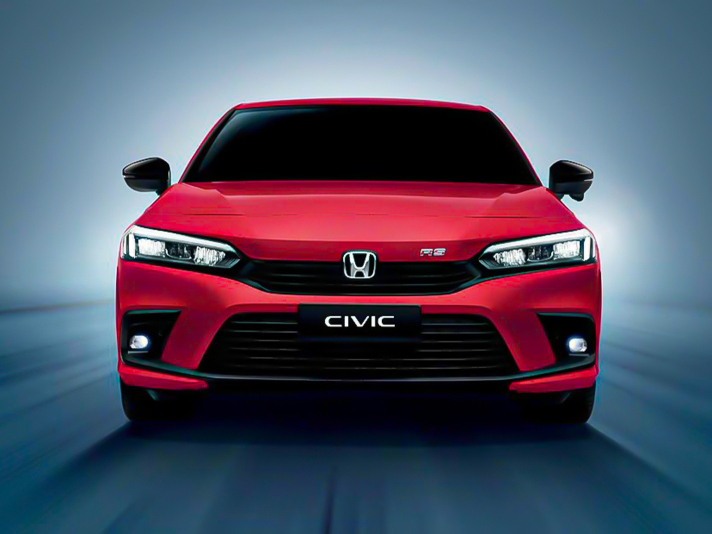
Honda Civic Interior Revealed: A Comprehensive Analysis of Civic’s Interior Charm
Kevin WongJul 10, 2025
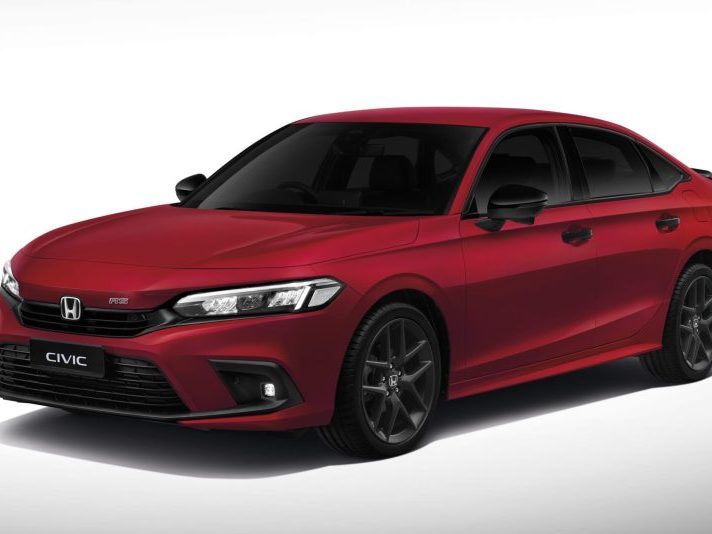
Honda Civic Price Revealed: The Most Detailed Buying Guide!
AshleyApr 8, 2025
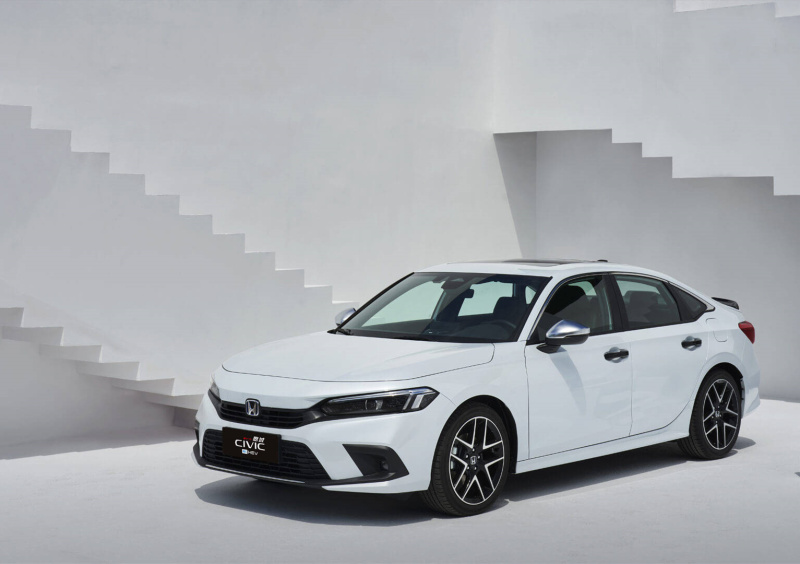
Whether it's about appearance or handling, why do young people all like Honda Civic?
WilliamSep 24, 2024
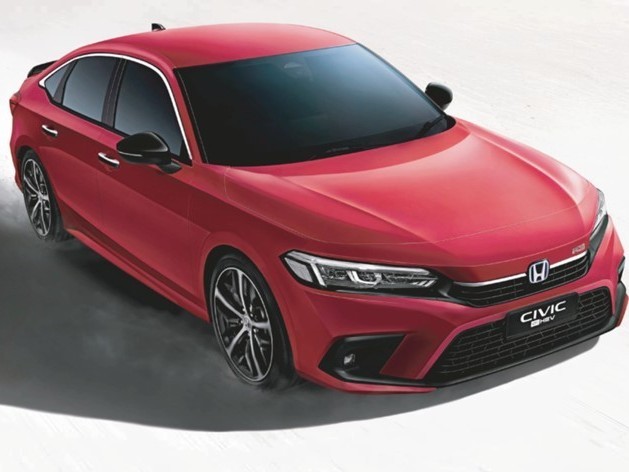
2022 Honda Civic: Hybrid car with the fastest acceleration, lowest fuel consumption, who says eco-friendly cannot be fast
JohnSep 3, 2024
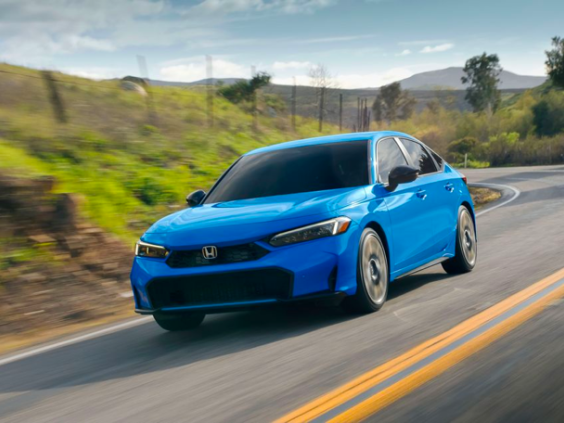
2025 Honda Civic debuts, minor changes in appearance, has 1.5 Turbo model been discontinued?
LienMay 22, 2024
View More





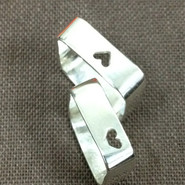






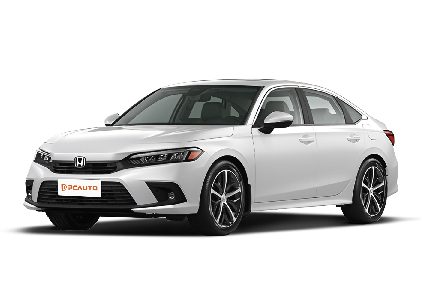
 Cars
Cars
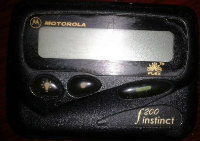



Pros
Cons